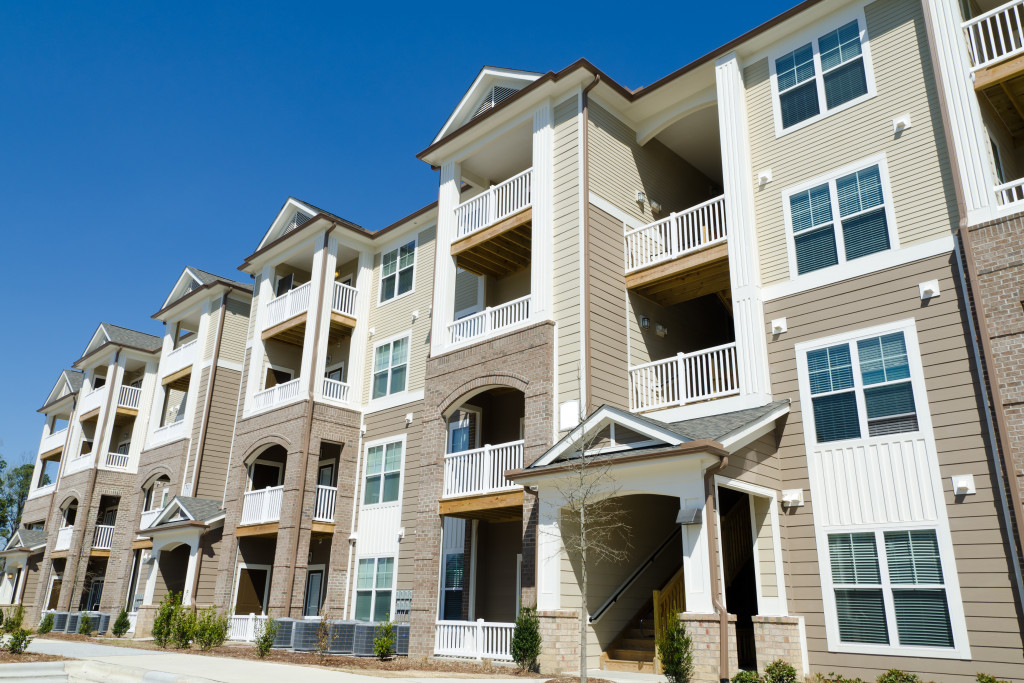- Conduct a security assessment to identify risks and vulnerabilities. You may need to call in professionals for certain maintenance tasks.
- Invest in security systems and devices, such as security cameras, access control systems, alarm systems, and fire suppression systems.
- Train your employees on safety and security practices. Conduct regular drills and simulations to ensure they are prepared for emergencies.
- Establish and enforce policies and procedures related to safety and security, and communicate these clearly to employees and visitors.
- Stay up to date on industry trends and threats that may affect your business or property.
As a business owner or a real estate investor, you understand the importance of maintaining a safe and secure environment for yourself, your employees, and your clients. Security measures and safety practices not only help protect people from harm, but they also safeguard your assets and reduce the risk of liabilities and legal issues. That’s why it’s crucial to take proactive steps to manage your safety and security in your commercial property. In this blog, you will learn tips to help you do just that.
Conduct a Security Assessment
The first step to managing your safety and security is to assess your current environment and identify potential risks and vulnerabilities. Conducting a security assessment may involve reviewing your property’s layout, identifying access points, checking security systems and devices, and evaluating existing policies and procedures. This process can help you identify areas for improvement and develop a plan to address them.
You may also want to consider employing the help of professionals for certain maintenance tasks. For example, you can call in a fire damper testing service provider to inspect and test fire dampers in your building, ensuring they are functioning correctly. This is especially important as fire damper testing is required by law. This ensures that the building meets fire safety standards and that occupants are protected.
Invest in Security Systems and Devices
Once you’ve identified potential risks and vulnerabilities, the next step is to invest in appropriate security systems and devices that can help mitigate those risks. Examples of security systems and devices include the following:
Security cameras

Security cameras are a great way to monitor your facility, deter crime, and provide evidence in the event of an incident. Make sure you check with local law enforcement for any regulations or restrictions on the installation and use of security cameras.
Access control systems
Access control systems help limit who can enter your property by granting access only to authorized personnel. This can include card readers, keypads, or biometric devices.
Alarm systems
Alarm systems can be used to trigger alerts in the event of a security breach and alert authorities if necessary. Alarm systems may also include sensors that detect motion, smoke, or fire.
Fire suppression systems
Fire suppression systems are designed to detect and extinguish fires quickly, helping to protect your property from the risk of fire damage.
Be sure to choose systems and devices that meet your specific needs and comply with local laws and regulations.
Train Your Employees on Safety and Security Practices
Your employees are your first line of defense when it comes to safety and security. That’s why it’s essential to provide them with proper training and education in safety and security practices. Some examples of training topics may include emergency response, conflict resolution, workplace violence prevention, and basic self-defense. You may also want to conduct regular drills and simulations to ensure that your employees are prepared for emergencies and can respond appropriately.
Establish and Enforce Policies and Procedures
Establishing and enforcing policies and procedures related to safety and security can help ensure consistency and compliance across your organization. Policies and procedures may cover areas such as access control, visitor management, incident reporting, and response protocols.
Be sure to communicate these policies and procedures clearly to your employees and visitors and hold them accountable for following them. Regular audits and reviews can help identify any areas for improvement.
Stay Up to Date on Safety and Security Trends and Threats

Finally, it’s essential to stay up to date on safety and security trends and threats that may affect your business or property. This could involve subscribing to industry newsletters, attending conferences and seminars, and consulting with security experts. By staying informed, you can identify emerging risks and take proactive steps to mitigate them.
Managing safety and security in your commercial property is essential for protecting people, assets, and liabilities. Taking proactive steps such as conducting a security assessment, investing in appropriate systems and devices, training employees on safety practices, establishing policies and procedures that are enforced consistently across the organization, and staying up to date with industry trends can help you create a safe environment where everyone feels secure. With these tips in mind, you’ll be better equipped to protect yourself from potential risks or threats while ensuring compliance with local laws.

